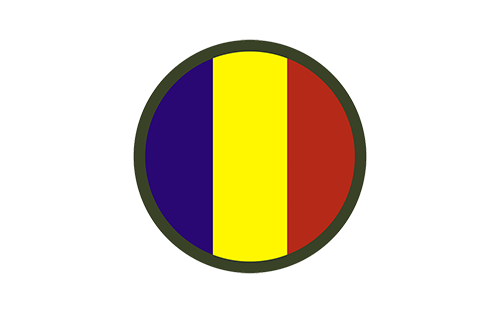FORT EUSTIS, Virginia –Mobile technologies are undoubtedly providing museums around the globe with new and innovative opportunities to engage with their audiences before, during and after their visit to the museum site, and The National Museum of the U.S. Army (NMUSA) on Fort Belvoir is no exception.
The team of Dr. Rick Watson, Jose’ Gutierrez, Ralph Finley, and David Mazanec at the NMUSA worked with TADLP Mobile Division prior to and then through the 2020 pandemic to create the app, adding and innovating as they passed milestones and closed in on opening day. Developing a mobile app was an early priority for the NMUSA curators.
Working together, the joint NMUSA-TADLP team produced an app that makes the visitor experience meaningful for Soldiers and veterans as well as informative, entertaining and insightful for families, civilians and foreign visitors as they walked through the museum space. The Training and Doctrine Command (TRADOC) G-6 office provided valuable assistance to the teams in order to complete the project, providing project management oversight, and ensuring that intended outcomes were met.
For some, it is an invaluable experience to be able to engage with another person or a museum guide face-to-face and ask questions. However, when trying to capture the attention of various generations, it is good to consider involving some tech to augment a guided tour. Using the ready-availability of the smartphone, the app showcases how visitors can use a tech solutions in order to boost the conventional museum experience.
“It’s just a different way to involve people – the younger audience. Apps and the platforms that drive them provide museums and galleries with the means to make the visitors experience truly special, providing much more than a helpful guide through the rooms and dioramas.” said Matt MacLaughlin, Mobile Division chief.
“The original opening date was scheduled to coincide with the 2020 Army birthday but the COVID pandemic delayed that.” said Edward Eck, a member of the development team. “We were able to suggest, design and build a number of extra features while teleworking, to use the extended deadline to build an even better product than we planned under the originally submitted specifications. It’s a much better app that serves the visitor even before they arrive at the museum’s front door; when they download the app, they know they are in for an exciting experience.”
“This was a very gratifying project to work on for all the teams involved,” said MacLaughlin, “this project was a great showcase for us – for what we provide and can do. Mobile learning works, reaching places that other learning may not, putting the material in a place that is organized and easy to get at. ”
The final app engages audiences with both the museum collection and the organization that created it, and offers a range of ‘ways-in’ to make the material interesting, as well as features specifically created for children’s tours that were not included in the initial specifications.
Apps and the mobile web enable us to take collections like this and knowledge about the Army beyond the walls of the museum. They can help foster conversations with new and diverse audiences.” said Eck.
Among the many features built into the application, it provides users with a comprehensive history of the Army, conflicts at home and abroad, and the Soldier experience as seen the eyes of the men and women who served. Besides helpful Directions and Museum information, key application features include Exhibits/Artifacts, News and Articles, Theaters of War, Global War, Medal of Honor, 3D models, Audio Tours and even information for Hosting Events at the museum venue. This application also includes links and references found within specific sections of the museum.
“What we ultimately wanted to create was something useful to both the visitor and a tribute to all Soldiers who have fought and died on battlefields all around the world because they ensured American citizens the freedoms and liberties they have today. In that respect, we had a duty to get it right.” said Eck.

The National Museum is located on 84 acres adjacent to Fort Belvoir, Virginia, 20 miles south of Washington, D.C. No I.D. card is required to reach the museum. Open daily except on December 25 from 9 a.m. to 5 p.m. Admission is free.
Visit the NMUSA online at https://www.thenmusa.org/
ABOUT THE ARMY DISTRIBUTED LEARNING PROGRAM (TADLP)
Established by the Chief of Staff of the Army in 1996, the Commanding General of Training and Doctrine Command (TRADOC) was appointed the Executive Agent for TADLP and is the full-line authority for the centralized management and integration of the program. Located at Fort Eustis in Virginia, the TADLP Director is Ms. Helen Remily.
The Army Distributed Learning Program (TADLP), improves Army readiness by providing rigorous, relevant, and tailored distributed training and education to Soldiers, leaders, and Army civilians from a responsive and accessible – frequently mobile – delivery capability. Distributed Learning (DL) is a modern, proven instructional model used by the Army to deliver individual, collective and self developmental training and education anytime, anywhere. TADLP leads the way in creating user-friendly, pliant and adaptable distributed and distance learning models that leverage emerging technologies to distribute learning across an array of portable devices in a variety of formats depending on the needs of the user. To learn more about the people and facilities of TADLP visit their website at
https://tadlp.tradoc.army.mil/
ABOUT THE U.S. ARMY TRAINING AND DOCTRINE COMMAND (TRADOC)
The U.S. Army Training and Doctrine Command (TRADOC) was created on July 1st, 1973.
For nearly half a century TRADOC has fundamentally transformed the U.S. Army into the best-trained, best equipped, best led, and best organized modern land power in the world today. TRADOC shapes Army forces through four primary functions: Recruitment and Training, Leadership Development, Doctrine and Integrating Capabilities.
Headquartered at Fort Eustis, in eastern Virginia, TRADOC executes its mission through five subordinate commands and centers, U.S. Army Center of Military History, The U.S. Army Combined Arms Center (located at Fort Leavenworth, Kansas), The U.S. Army Center for Initial Military Training and the U.S. Army Recruiting Command (located at Fort Knox, Kentucky).
The command has a global perspective and oversees 32 Army schools organized under eight Centers of Excellence, each focused on a separate area of expertise within the Army (i.e. Maneuver and Signal). TRADOC trains more than 500,000 Soldiers and service members each year. To learn more about the U.S. Army Training and Doctrine Command visit their website at https://uat.tradoc.army.mil/


